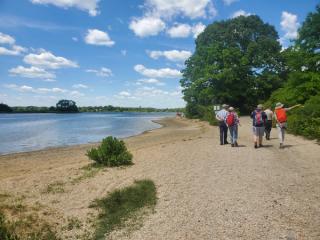
Formulating a Site Plan to Support the Ecology and Management Needs of the Bluff Point Properties, in Groton CT
Read more

Bay of Plenty Regional Council has a biodiversity management mandate for the region and allocates resources to community-led programs to restore and enhance native ecosystems. Bay of Plenty Regional Council use pest-mammal control as one of their main tools for ensuring the region’s native forests and bird populations remain healthy. Often this work is completed by volunteers in the region. Data was required to determine the impact of pest-mammal control programs, and to analyze population-level trends comparing exotic and indigenous birds, as well as individual at-risk species.
Our Ecologists undertook forest bird monitoring in the Ōhope Scenic Reserve, Matatā Scenic Reserve and Aongatete Forest. They also introduced a control site to compare the results with non-pest-mammal controlled reserves. We worked with Bay of Plenty Regional Council to update and execute their long-term forest bird monitoring methodology, ensuring changes in bird populations can be monitored over time.
The bird monitoring took place over six weeks and involved visual and audial identification of native and exotic birds using 5-minute bird counts at over 190 stations in steep and hilly terrain.
Our team statistically analysed the data to assess the effectiveness of pest-mammal control on bird populations over time. We also compared populations in pest-controlled sites against non-pest-controlled sites.
Bay of Plenty Regional Council raised concerns on the potential effect of observer bias within the historical bird count data. Our team found a solution by running additional analysis to elucidate past incidents of bias and worked with Bay of Plenty Regional Council on the methodology to address and minimise the occurrence of observer bias going forward.
The results of the monitoring showed that over time indigenous bird populations were increasing in pest-mammal controlled forests. In addition, pest-mammal controlled reserves showed to have significantly higher and more diverse populations of indigenous birds than non-pest-controlled reserves.
Bay of Plenty Regional Council were able to make data-driven decisions to inform their long-term planning activities for restoring and enhancing indigenous biodiversity and validated their investment in targeted programs to date.